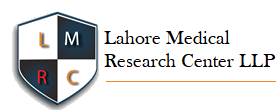Medical Importance of Insects
DOI:
https://doi.org/10.54393/mjz.v3i02.55Abstract
Around the globe, human societies have employed insects and the compounds collected from them as a source of therapeutic resources. These creatures have not only been used medically, but also mystically and magically in a variety of civilizations to cure various diseases. For pharmaceutical study, insects seem to be an almost limitless resource. Medicinal potential of insects makes a substantial contribution to the debate over biodiversity preservation.
Bee venom treatment is common in conventional medicine to cure ailments including rheumatism, arthritis, discomfort, malignant tumors, and skin. Several peptides with a range of medicinal benefits are present in bee venom including Melittin, apamin, ado lapin, the mast cell degranulating peptide, enzymes (phospolipase-A2) and amines including histamine and adrenaline. Melittin and phospolipase-A2 may be used to treat cancer cells, which can include leukemia and cancer cells of the kidney, liver, prostate, lung, and mammary gland. Bee venom may cause cancer cells to undergo apoptosis, according to a recent study by Moon et al. In rheumatoid synovial cells, bee venom promotes apoptosis by decreasing the expression of BCL2 and increasing the expression of BAX and caspase-3. In synovial fibroblasts from rheumatoid arthritis patients, bee venom causes apoptosis by activating caspase-3 [1].
Human immunodeficiency virus can be eliminated by a toxin present in bee venom (HIV). Melittin, which surrounds the HIV virus among other viruses, is present in bee venom. Nanoparticles in this melittin are abundant and target a crucial component of the virus' structure. For use in upcoming clinical studies, nanoparticles are simple to produce in large numbers [2]. Maggot treatment is a kind of biotherapy that includes injecting live, sterilized maggots (fly larvae) into the nonhealing skin and soft tissue wounds of a person or an animal in order to debride the wound of necrotic (dead) tissue and disinfect it. Maggot treatment has been shown to aid in wound healing. The Pseudomyrmex sp. often known as the samsum ant, is a species of South American tree ant. Its venom has a wide range of therapeutic benefits, including the treatment of hepatitis and the protection of the liver [3].
The utilization of insects as a natural product has the potential to provide a treatment that is effective in both treating and preventing illnesses. Development of insects as significant new alternative medicines has advanced significantly in recent years. Since insects are very diverse and have long used a wide variety of natural chemicals to adapt to environmental changes, this is an intriguing and quickly growing new field to study in medicine
References
Moon DO, Park SY, Heo MS, Kim KC, Park C, Ko WS, et al. Key regulators in bee venom-induced apoptosis are Bcl-2 and caspase-3 in human leukemic U937 cells through downregulation of ERK and Akt. International immunopharmacology. 2006 Dec; 6(12):1796-807.
Hood JL, Jallouk AP, Campbell N, Ratner L, Wickline SA. Cytolytic nanoparticles attenuate HIV-1 infectivity. Antiviral therapy. 2013 Jan; 18(1):95-103.
Altman RD, Schultz DR, Collins‐Yudiskas B, Aldrich J, Arnold PI, Arnold PI, et al. The effects of a partially purified fraction of an ant venom in rheumatoid arthritis. Arthritis & Rheumatism: Official Journal of the American College of Rheumatology. 1984 Mar; 27(3):277-84.
Downloads
Published
How to Cite
Issue
Section
License
Copyright (c) 2022 MARKHOR (The Journal of Zoology)

This work is licensed under a Creative Commons Attribution 4.0 International License.
This is an open-access journal and all the published articles / items are distributed under the terms of the Creative Commons Attribution License, which permits unrestricted use, distribution, and reproduction in any medium, provided the original author and source are credited. For comments editor@markhorjournal.com











